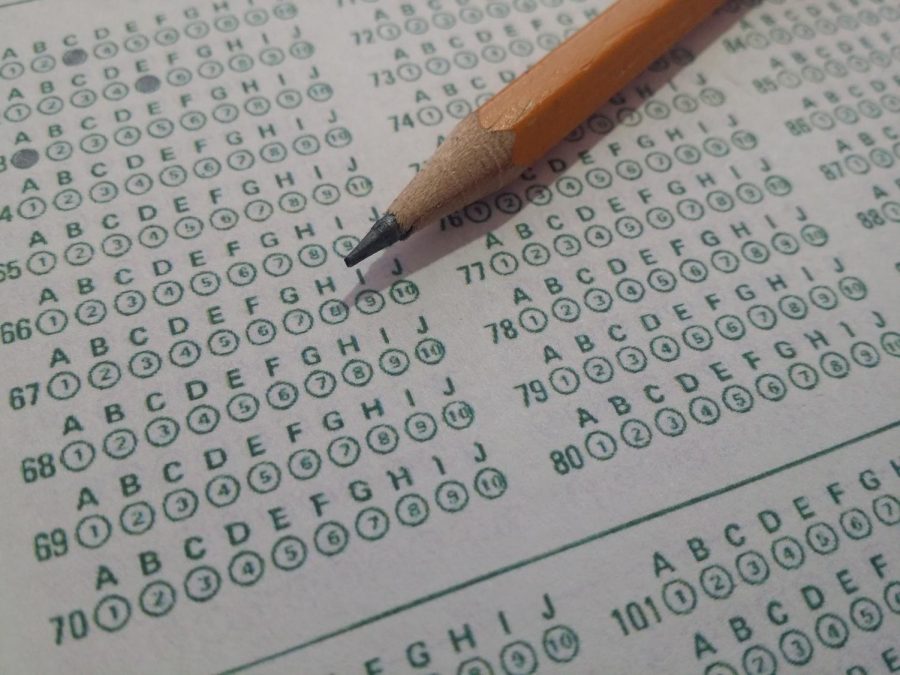Nationwide assessment given to seniors at random
Nearly 70 GBHS students were selected to take this exam
Creative Commons/https://www.flickr.com/photos/albertogp123/
Through random nation-wide selection, over fifty students from Granite Bay High were selected to take part in this assessment to provide data for academic achievement across the country.
This spring, many students were rewarded with a Jamba Juice smoothie for taking a certain test.
“NAEP is the National Assessment of Educational Progress,” assistant principal Jessup McGregor said. “It’s a Congressionally mandated project and is used to provide comparable achievement data across states. Achievement testing varies from state to state, so the idea is to have a single measure to understand how students are performing across the country.”
The only grade level that participated in this exam were seniors.
The National Center for Educational Statistics uses a random selection process to determine which students from which schools will participate,” McGregor said.
Many students were confused on why they were chosen or how they were chosen, but it was just a random selection process.
“Sixty four students took the test, and they were all seniors,” McGregor said.
Samir Kazim is a senior who had the opportunity to take the exam.
“It felt like every other standardized test,” Kazim said. “It was separated into three different subtests consisting of English, math and science.”
After taking the exam, Kazim said he was a little surprised by how easy it was.
“I was a little disappointed to see that this was the standard that our nation’s students are held up to,” Kazim said.
Because the only thing that determines the nation’s knowledge was this exam’s outcome, Kazim said he doesn’t think it offers a full picture.
“Standardized tests do not measure one’s ability to cope with and overcome dynamic circumstances present in college and the workforce,” Kazim said. “They confine an individual to a number to measure their academic capability, yet neglect their tenacity, work ethic or adaptability.”
Kazim said he believes there are many other methods to evaluate a student vs. a simple NAEP assessment.
Tanvi Yadlapalli, a senior, also experienced taking the NAEP test.
“Some questions were easy, others were confusing, but overall the test was fine,” Yadlapalli said.
Yadlapalli had a good experience with the test.
“I was kept engaged since the test was on a touch-screen computer and the test was designed for you to use components the touchscreen had to offer,” Yadlapalli said.
Because the test was three different parts, all the participants had a range on what test they took.
“It seemed like the people who excelled in English took the reading test, those who did well in science took the science test and for the students like me who do well in math, we took the math test,” Yadlapalli said. “Yet that could have been a coincidence.”
Emma Thompson said she felt prepared to take the NAEP test.
“I don’t think it was hard, I got the English one, so compared to the English section on the SAT I thought it was easier,” Thompson said.
Like Thompson, many students said they thought the NAEP assessment was bearable and was easier than the SAT overall.
“It was a standardized test like the SAT, but it was way shorter,” Thompson said. “It wasn’t that hard, and there were only two sections, so it wasn’t long.”

Sydney is a senior, and this is her first year on the Gazette/GBT.org staff.









![A group photo of all students who came to STN at the first Cinefest of STN were they showed films that other schools did for some of the competitions.
"[my favorite moment was] crazy 8 or cinefest or socializing." Elliana Montez a freshman at GBHS](https://granitebaytoday.org/wp-content/uploads/2025/03/CgHlLzxuCLXTL8GUeOFSXTK2JFtSMxUFrH6bnLcM-600x450.jpg)




